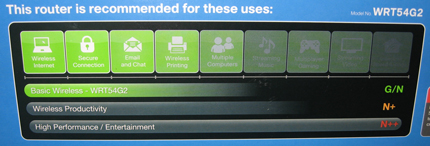 I was readying my nice new home Linux server/desktop for Fedora 12 when I realized I only had to wait a few more days for Fedora 13. Sounded good!
I was readying my nice new home Linux server/desktop for Fedora 12 when I realized I only had to wait a few more days for Fedora 13. Sounded good!
My new server has a nice Coolermaster case that can hold 10 drives, and has a 1100 Watt power supply. I really like the case, it makes putting in drives a snap, plus the cable wiring went very well. Plus the thing is made of cool brushed aluminum. Who can argue with that?
I was re-commissioning this server after having used it as a gaming Windows machine for a bit. So it had dual NVidia SLI cards (GeForce 8800 Ultra) in it. When I first booted up the LiveCD, it got kernel errors that didn’t really track down to anything that was helpful. It would boot up but then freeze after a few minutes.
I tried the DVD install, and that got the same results. After much head scratching and googling, I tried removing one of the Nvidia cards. I was planning on only using 2 monitors anyway, and each card had 2 DVI outputs. This did the trick!
Next up, I had to run keyboard/mouse cables to my home office. I like to keep the actual computer down in my server room in the basement, it keeps my office nice and quiet. But I found that my 100 foot run for my PS/2 mouse didn’t work! My mouse is a Logitech MX310 that is really USB but I use a PS/2 converter on it so I can use a long cable run. This had been working fine on my previous Linux installations.
I found that the mouse would work fine if directly attached, so it was a distance issue! Which is odd, since on my old server it worked fine, and the cable was the same. I ended up using an USB extender device that I had bought years ago and never needed. It uses ethernet cable in between two adapters so you can have a long USB run. This did the trick! The brand is “coolgear” and I forget where I got it.
Next up: Getting Nvidia working on Fedora 13
 I ran a yum update on my Fedora13 install the other day, and then when I booted back up and logged in, my KDE would not start! It would start to show the login screen, but once I did a login, it blacked out and went back to the login screen again.
I ran a yum update on my Fedora13 install the other day, and then when I booted back up and logged in, my KDE would not start! It would start to show the login screen, but once I did a login, it blacked out and went back to the login screen again. Now that I got my new system running Fedora 13, I needed to configure my Nvidia card to support my two monitors.
Now that I got my new system running Fedora 13, I needed to configure my Nvidia card to support my two monitors. I was readying my nice new home Linux server/desktop for Fedora 12 when I realized I only had to wait a few more days for Fedora 13. Sounded good!
I was readying my nice new home Linux server/desktop for Fedora 12 when I realized I only had to wait a few more days for Fedora 13. Sounded good!

 I was running into ALL kinds of problems with WMP on Vista (64, but I hear 32 is bad also) where it was not ripping my CDs into MP3s, getting errors when trying to even play my CDs, and generally confusing the hell out of me. It was NOT a codec problem, everything was normal on my system. In fact, it would play about 30 seconds of a song and then throw an error.
I was running into ALL kinds of problems with WMP on Vista (64, but I hear 32 is bad also) where it was not ripping my CDs into MP3s, getting errors when trying to even play my CDs, and generally confusing the hell out of me. It was NOT a codec problem, everything was normal on my system. In fact, it would play about 30 seconds of a song and then throw an error. I have some old ReplayTV’s in use in my home setup, and sometimes they act up on me. The usual thing is they no longer are able to tune into the cable signal (“no video signal” errors).
I have some old ReplayTV’s in use in my home setup, and sometimes they act up on me. The usual thing is they no longer are able to tune into the cable signal (“no video signal” errors).